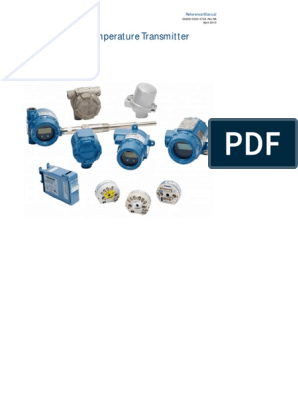Ibrahim Khan
M.Tech (Process Design Engg-II)
�Overview
�Measurement..Necessity?
Add Your Text
Pressure
Measurement
Level
Flow
Temperature
�Point
single discrete liquid height
Continuous
Analog output
preset level condition High or low alarm
Level Directly linked to Level Measurements
Visual indicator..
Types of Level Measurement
�Materials to be Measured
Liquid from pure, clean water to viscous, sticky, and corrosive and abrasive fluids Bulk material from free-flowing, dry crystals to moist, lumpy solids
The processing environments for level sensors extend from vacuum to high-pressure service, and from subzero to elevated temperatures.
�Level Sensors
Mechanical
Hydrostatic Pres
Add Your Text Add Electrical Your Text
�Mechanical Sensors
Float methods Buoyancy method Vibrating level systems
�Hydrostatic Pressure Methods
Differential pressure level detectors Bubbler systems
�Electrical Method
Conductivity probes Capacitance probes Optical level switches Ultrasonic level detectors Microwave level systems Nuclear level systems
�Floats
The basic float arm indicator comprises very simply a float connected to a pivoted arm that drives pointer or a switch.
The unit can be made for either side- or top- entry. Moving parts present a very definite disadvantage, since they are situated in the liquid and are thus prone to corrosion and seizing
�Floats with transmission linkage:
Floats with magnetic switches
�Buoyancy method
These devices use Archimede's principle The mechanical level indicator consists of the immersion body with calibrated measuring spring which transmits the change of level to the mechanical or electrical indicator
�Vibrating level switches
Principle: A vibrating fork or blade An electronic circuit excites the blade of probe to its resonant frequency, and when material comes into contact with the blade, vibration is damped causing switching of the relay This device is suitable for control maximum levels of solids and liquids in many types of applications (e.g. foods, grains, granules, pellets, cement, powder)
�Hydrostatic pressure methods:
The hydrostatic pressure at the bottom of a container is directly proportional to the liquid height
�Bubbler systems
Clean air from a compressor is forced through a restriction into a tube that leads to the bottom of the tank The air pressure after the restriction is equal to the hydrostatic pressure at the bottom of the tank
�Conductivity level probes
- only for electrically conductive liquids
��Capacitance level probes
for conductive liquids: An insulated electrode is used (e.g. an insulated rod) The insulator may be polytetrafluorethylene or polyethylene The conductive liquid forms the second electrode With increasing liquid level increases the area of the second electrode as well as capacitance An electronic transducer converted capacitance changes into a voltage or current signal
�Capacitance level probes design
Applications: Suitable for measuring of liquids and bulk (loose) materials Suitable for wide temperature ranges (from -40 to +200) C and high pressures Unsuitable for measuring foaming liquids
�Optical level switches
Light must be transmitted and then received Optical level sensors consist of: Light source (bulb, LED) Photoelectric detector (photodiode, phototransistor, photoresistor) Devices works with infrared or visible radiation
�Ultrasonic level measurement
The measuring equipment consists: A transmitter that periodically sends a sound pulse to the surface of the liquid A receiver that amplifies the returning pulse A time interval counter that measures the time elapsing between the transmission of a pulse and receipt of the corresponding pulse echo
�Ultrasonic level-meter with compensation
Compensation of the influence of the gas density changes Cyclical measurement of the sonar pulse velocity in the environment Automatic compensation
�Ultrasonic level-meter design
�Microwave level systems
They are parallels in the operating principles of ultrasonic systems with microwave radar level systems Much higher frequencies (around 10 GHz) are used in radar system The radar beam is not affected by density changes
�Frequency Modulated Continuous Wave method
When the reflected signal f0 returns to the receiver, it is mixed with the outgoing signal f1. There will be a difference in frequency between the transmitted and the reflected signals f = f1 f0 The difference in frequency is proportional to the time difference t = t1 t0 and also to the distance to the liquid surface. The frequency difference can be measured very accurately.
�Radar level gauge design
�Nuclear level systems
Nuclear radiation from a selected source can be related to liquid or solids levels in a vessel Cobalt-60, cesium-137 or radium-226 is used as the gamma radiation source The radioactive source is capable of transmitting through the container wall As a detector for converting nuclear gamma ray radiation into electrical quantities related to level, some systems use Geiger counters
� The material to be measured must be looked at to determine its compatibility with the instrumentation. Guidelines for Selection Is the area hazardous, requiring intrinsically safe or flameproof products ? Can the sensor contact the material being measured ?
�Guidelines..cont
Can the sensor be inserted into an existing entry or does it require new "hole" ? Does the instrument have to be top-enter or can be mounted in the side ? Point or Continuous measurement Remote control or indication desirable..
�Guidelines..cont
Objection to the mechanical moving parts.. Required accuracy of the measurement The equipment need be compatible with data loggers microprocessor or computers Costs..
�Review/ Summary
Level, Measurement, Types Level Sensors.. Selection of Level Sensor..!
�Ending Style
��References:
Anderson A.A.: Instrumentation for Process
Measurement and Control. CRC Press, Boca Raton, 1998 Altmann W.: Practical Process Control for Engineers and technicians. Elsevier, Amsterdam, 2005 Bentley J.P.: Principles of Measurement Systems.
Pearson Education Limited, 2005
Dyer A.S.: Survey of Instrumentation and
Measurement. John Wiley, Inc. New York, 2001 McMillan G.K., Considine D.M.: Process/Industrial Instruments and Controls Handbook. McGraw/Hill, New
York, 1999








































































































